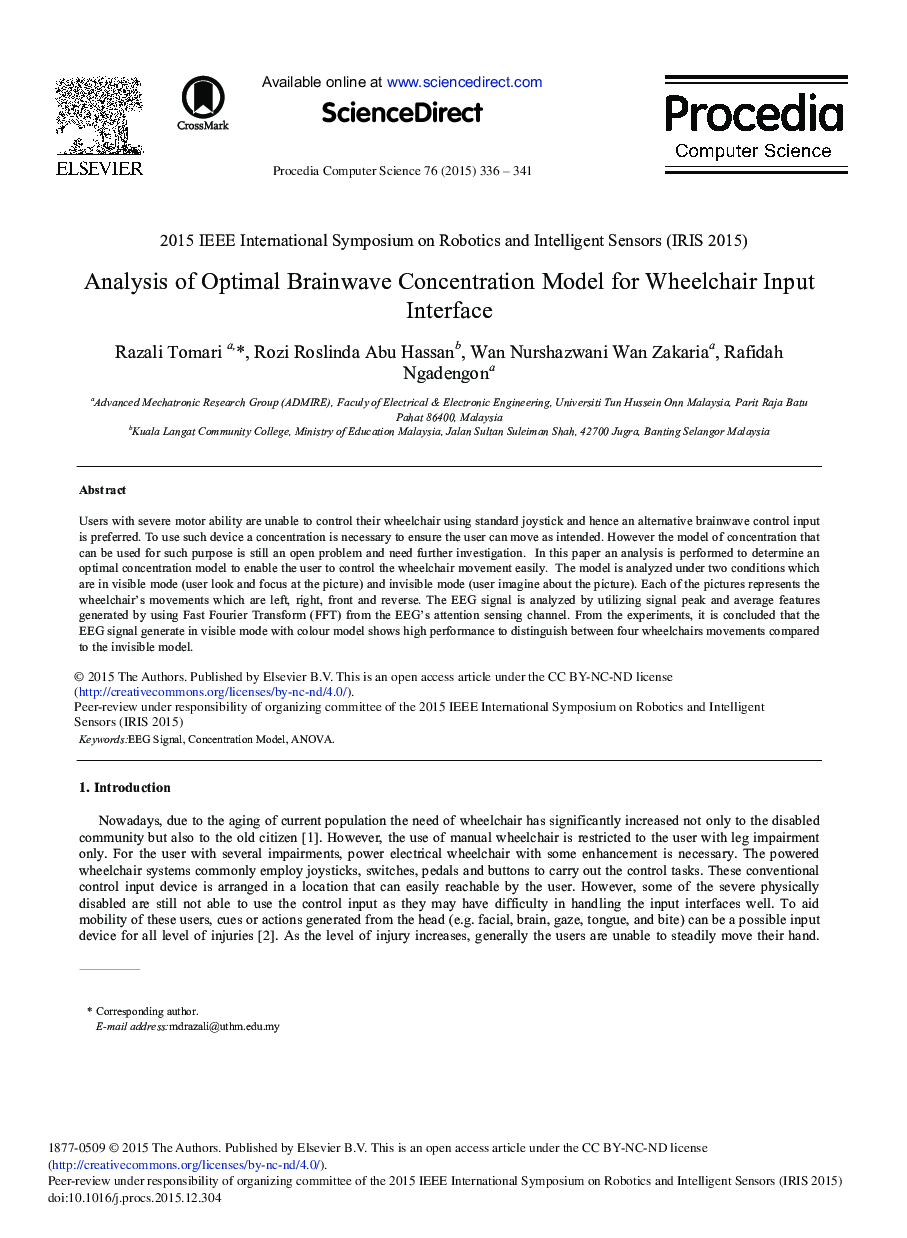| Article ID | Journal | Published Year | Pages | File Type |
|---|---|---|---|---|
| 484319 | Procedia Computer Science | 2015 | 6 Pages |
Users with severe motor ability are unable to control their wheelchair using standard joystick and hence an alternative brainwave control input is preferred. To use such device a concentration is necessary to ensure the user can move as intended. However the model of concentration that can be used for such purpose is still an open problem and need further investigation. In this paper an analysis is performed to determine an optimal concentration model to enable the user to control the wheelchair movement easily. The model is analyzed under two conditions which are in visible mode (user look and focus at the picture) and invisible mode (user imagine about the picture). Each of the pictures represents the wheelchair's movements which are left, right, front and reverse. The EEG signal is analyzed by utilizing signal peak and average features generated by using Fast Fourier Transform (FFT) from the EEG's attention sensing channel. From the experiments, it is concluded that the EEG signal generate in visible mode with colour model shows high performance to distinguish between four wheelchairs movements compared to the invisible model.
